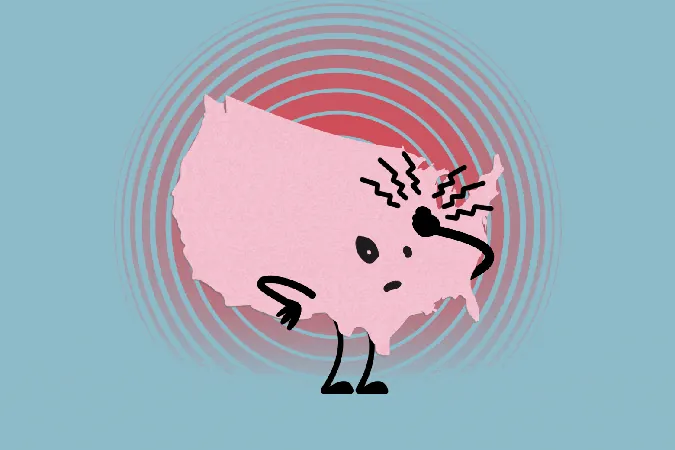
Are Your Blood Sugar Levels Low? Here Are 5 Sneaky Signs to Watch For!
2025-06-02
Author: Nur
The Hidden Dangers of Low Blood Sugar
Your body and brain rely on glucose for energy, so when blood sugar drops, it can feel like everything comes to a standstill. This drop, known as hypoglycemia—when your blood sugar falls below 70 mg/dL—can be particularly hazardous for individuals with diabetes. While it’s rarer in people without diabetes, some may experience a condition called reactive hypoglycemia, especially if they have a family history of diabetes or obesity.
5 Warning Signs That Your Blood Sugar Might Be Too Low
Low blood sugar may manifest in some sneaky ways. Here are five symptoms to watch out for:
1. Dizziness and Trouble Concentrating
When your glucose levels plunge, your brain suffers from a lack of energy. This can lead to feelings of dizziness, lightheadedness, and difficulty concentrating. As dietitian Samantha Cassetty explains, it’s your body signaling that it needs a boost!
2. Sudden Shakiness and Mood Swings
Low glucose can directly impact your mental state. As your brain struggles for fuel, it releases adrenaline, which can cause anxiety or irritability. If you find your emotions swinging like a pendulum, it could be a sign your blood sugar is plummeting.
3. A Racing Heartbeat
The adrenaline rush can also trigger your body’s fight-or-flight response, leading to a rapid heartbeat and increased blood pressure. This is particularly concerning for those with pre-existing heart conditions.
4. Unexplained Nausea
Believe it or not, feeling nauseous can also be a symptom of low blood sugar. Although it might catch you off guard, this can happen out of the blue and is often more common in those on diabetes medications.
5. Insatiable Hunger
When fuel levels tank, your body cries out for food. It releases ghrelin, the hunger hormone, leading to cravings for sugary snacks. Your brain is screaming for glucose, and it wants it now!
Proven Strategies to Stabilize Your Blood Sugar
Dietitians recommend several tips to maintain steady blood sugar levels:
- **Pair Carbs with Protein or Healthy Fats**: This combination helps regulate digestion and keep glucose levels stable. Think of snacks like nuts paired with fruit or cheese with whole-grain crackers.
- **Load Up on Fiber**: Fiber-rich foods, like beans, vegetables, and whole grains, slow digestion and ensure a gradual release of glucose.
- **Eat Regularly**: Avoid skipping meals, as hypoglycemia often occurs two to five hours post-meal. Consistent eating schedules can help you maintain balance.
- **Follow the 15/15 Rule**: If you experience low blood sugar and have diabetes, consume 15 grams of fast-acting carbohydrates (like juice or glucose tablets), then recheck your levels after 15 minutes.
- **Know the Extreme Warning Signs**: A glucose level below 54 mg/dL is a medical emergency that needs immediate intervention.
- **Consult with Your Healthcare Provider**: If you suspect hypoglycemia, especially if you have diabetes, keep your healthcare team in the loop.
Final Thoughts
Low blood sugar is often overlooked but can pose significant health risks. Recognizing these sneaky signs—like dizziness, shakiness, and sudden hunger—can help you take action before symptoms worsen. Stay vigilant to maintain your health!


 Brasil (PT)
Brasil (PT)
 Canada (EN)
Canada (EN)
 Chile (ES)
Chile (ES)
 Česko (CS)
Česko (CS)
 대한민국 (KO)
대한민국 (KO)
 España (ES)
España (ES)
 France (FR)
France (FR)
 Hong Kong (EN)
Hong Kong (EN)
 Italia (IT)
Italia (IT)
 日本 (JA)
日本 (JA)
 Magyarország (HU)
Magyarország (HU)
 Norge (NO)
Norge (NO)
 Polska (PL)
Polska (PL)
 Schweiz (DE)
Schweiz (DE)
 Singapore (EN)
Singapore (EN)
 Sverige (SV)
Sverige (SV)
 Suomi (FI)
Suomi (FI)
 Türkiye (TR)
Türkiye (TR)
 الإمارات العربية المتحدة (AR)
الإمارات العربية المتحدة (AR)